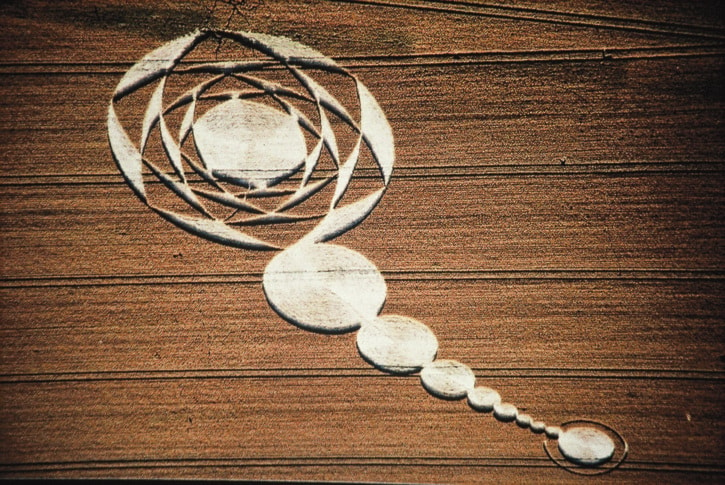Intrigue sparked by a 1990 television show led Chad Deetken into the mysterious world of crop circles, where he became a world expert.
Deetken, who will present a talk and slide show in Salmon Arm on Oct. 7 to benefit a World Service Association scholarship program, watched an episode on crop circles in England on Unsolved Mysteries
“I got hooked right away because these things are intriguing; I thought either they are all fake or there is a very strange phenomenon occurring here,” he says, noting the bait for him was the existence of physical evidence, unlike UFOs and poltergeists. “You can take that proof and you can test it.”
Within three months of the show, Deetken heard about a crop circle discovered on a farm in Alvena, Sask. He phoned the farmer who owned the property and was in his wheat field within three days.

“It was a small circle that looked kind of like a doughnut; it was not terribly impressive but, nevertheless, it was the real thing,” he says. “My first feeling was the ones in England were much nicer and bigger.”
But luck was with Deetken and, on his drive back to B.C., he detoured to visit a much larger and more intricate crop circle discovered in Warner, Alta.
“It was quite spectacular really and there was a feeling of amazement because the cause of it was unknown,” he says, pointing out he studied the circle very carefully, examining the way the wheat stalks were laid down, measuring the size (probably about three or four hundred feet in diameter), a circle with a thin ring three or four feet wide around the outside.
“The circle was completely flattened down in a counterclockwise direction and the ring was in a clockwise direction. It looked like someone had very carefully combed it into place – every stalk was beautifully laid down flat to the ground.”
Deetken was pleased the farmer, who was harvesting at the time, had stayed well away from the circle when he saw it from his combine.
And while he neither heard nor saw anything unusual over the night, he told Deetken his dogs had behaved in anxious, unusual ways and people of Warner reported numerous electronic malfunctions, including microwave meltdowns.
“It was a clear night, no weather events,” he says, noting there have been more than 15,000 crop circle investigations in England alone since 1978 and as many more throughout the world. “That defies explanation and for me, it was just a beginning. These sorts of things are reported all the time.”
In 1992, Deetken was invited to go to the stone monuments of Avebury in South Central England. Part of an investigative team, Deetken visited every year, but has given up going.
“It is awful; people have wrecked it by hoaxing. It’s a big problem,” he says, noting hoaxing was never heard of when he first began to investigate crop circles. “In England the waters have been so muddied I will no longer waste my time.”
Nor will the Las Vegas billionaire who invited Deetken to work for his National Institute for Discovery Science and has since quit funding research in England.
Deetken says that when analyzed at the cellular level, plant samples from crop circles reveal changes in the structures – the cells expand like a balloon.
“To say they’re all hoaxes is absolutely nonsense,” says Deetken, who continues to monitor crop circles on the web. “One of the best is www.cropcircleconnector.com.”
Funds raised by Deetken’s presentation at 7 p.m. Tuesday, Oct. 7 at First United Church will be used by the World Service Organization to support the education of underprivileged and tribal youth in India. To date the organization has assisted 43 students on the post graduate program.
Deetken will welcome questions following his crop circle slide show and talk.
